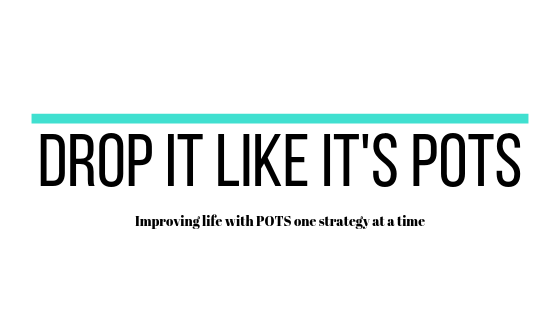Working within my energy envelope has been one of the most beneficial things I have done. It is doing daily activities in a way that does not cross the energy threshold and cause a crash. A crash is when we go beyond that threshold, or envelope, and pay for it with an extreme worsening of symptoms.
Crashes look different for each person. For some, they may not be able to get out of bed for months. When I crash, I get really “out of it” cognitively, achy (like fever aches sensation), a sore throat, a low-grade fever, worsening of orthostatic intolerance, and feel like all the blood has been drained from my body. It’s a blasty blast. My crashes last anywhere from a few hours to a few days.
Each crash causes a set back and hinders healing. So, by preventing these crashes, we can sometimes see overall improvement or at least be less miserable. Working within the energy envelope or “pacing” is not a treatment. It is an energy management skill. In this post, I will discuss the tips I learned at Mayo and that I have discovered along the way regarding pacing.
Note- Throughout this post I use the phrases energy threshold, energy envelope, and pacing interchangeably.
This is my experience as someone with a mild-ish perspective of ME. Out of respect to those with severe and complicated cases, it is important to note that this post and discussion may not apply to everyone.
Benefits of staying within the energy envelope
Prior to using this skill of working within the energy envelope, I used to do things based more on how I felt day-to-day. If I had a good day, I would do a ton and end up crashing. If I had a bad day, I would lay down a lot and end up getting deconditioned. It was a bad cycle. My energy levels and how I felt were all over the place and very unpredictable. Here are the benefits I have experienced since switching to pacing:
- Less severe symptoms. By crashing less, I experience the severe symptoms far less often.
- More predictable energy. This makes it easier to make plans, which is invaluable to trying to have a more normal life.
- Overall improvement. This is just conjecture, but I think it is possible that some of my overall improvement is due to using pacing. It would make sense that my body would heal more efficiently under these conditions vs. having the energy stores tapped out and in distress (like during a crash).
Identifying your envelope/threshold
Basically, you create a schedule, stick to it, and see how you do. It’s best to start with a low, attainable goal so that you do not get frustrated. If you crash, dial it back by 30 minutes to 1 hour of activity in the day and try again when you are back to baseline.
This process may take some trial and error. You may crash numerous times trying to find that “sweet spot”. It’s okay, that is to be expected. It will be worth it in the long-run.
If you are feeling like, “I don’t even know where to start”, here are some steps to guide you in the process of creating a plan.
- Think of a day where you did not crash or didn’t crash too bad.
- Write out a full day blank schedule in half-hour increments.
- Fill in the blanks of what you did based on that day you thought of. It doesn’t have to be perfect. A rough idea is fine.
- Look at it and consider how you can improve it by doing things such as spacing out heavier tasks to make the day look more steady. If you had a small crash from this example day, you could consider eliminating some of the activity in the schedule.
- Rewrite out your ideal schedule after editing it.
- Voila, you have a plan.
If you are struggling to come up with a plan, feel free to get in touch with me at: dropitlikeitspotsblog@gmail.com. I would be happy to help you navigate this skill.
How to get the most energy “bang for your buck”
- When I do healing activities (ex. deep breathing, exercises, etc.), I try to do them in time-efficient ways so that they do not interfere with my regular life too much. I meditate while I do a warm eye compress in the morning. When I shower, I do acupressure for the vagus nerve and end the shower with cold water for vagus nerve stimulation. When I was doing 30 minutes of physical therapy each day for dizziness, I would walk pretty quick with the head movements to get some cardio in simultaneously. I deep breathe while I do other activities. You get the point, you can blend these things into your day so that they aren’t an energy and time suck.
- Do necessary tasks in energy-conserving ways. For example, I will sometimes sit when I prepare food or when I do my hair.
- Streamline your “getting ready” routine. You don’t want to waste all your precious energy on this. Prioritize what is impactful. For example, I like makeup. So, I still wear it. But, gone are the days of blending 14 different eyeshadow colors to create a subtly bomb look that is imperceptible to the naked eye.

Tips to avoid crashes
- Add one new activity at a time and allow time to see how it works out for you. You do not want to overwhelm your brain or your body. Give yourself time to see how it fits into the natural framework of your life. This includes healing activities. Allow yourself to become efficient before you move on to the next thing.
- Within reason, follow your plan as opposed to following how you feel. This goes for when you feel good too. It’s easy to go crazy and do a ton when you’re at a higher point, but it’s more beneficial to stay steady day to day.
- Space out heavier tasks.
- Alternate rest and activity times frequently. I do better with more of a couple hours “on”/ 45 minutes to an hour “off” schedule rather than going balls to the wall for several hours/”off” for a few hours.
- If you get acutely sick, pull back a little. Otherwise, it will take longer to recover. I just read this from my Mayo notes and realize I do NOT do this. I should be better about this.

- Remember that mental activity counts. It’s sad and funny all at the same time. I can actually crash from expending too much mental energy. Our brains utilize a massive amount of energy to function, so this makes sense. When I make a grocery list/meal plan, I regard that as a physical activity because of the mental energy that it requires. I know that sounds super lame if you are a healthy person, but it’s an intense process for me.

This is my brain while:
- Meal planning whole food meals for myself.
- Meal planning separate meals for the rest of the family.
- Trying to come up with stealthily healthy options for my husband and older son.
- Making sure all ingredients have never been in the presence of a nut for the sake of my allergic son.
- Making sure all ingredients have never been in the presence of a nut for my sake because I’m still traumatized from giving my son an epi pen injection three years ago.
- All the meanwhile trying to wrap my head around the fact that Mount Everest isn’t the tallest mountain. Apparently some mountain in Hawaii is because they measure it from its origin below sea level. Seems like cheating to me. My older son is a walking encyclopedia and shatters my worldview like that daily.
Increasing activity
Your body may get to the point where you are ready to take on more activity. Do this slowly. At Mayo, they suggested that all increases should happen around 1%, otherwise the brain will revolt and cause your body to revolt.
To read more about pacing, check out my post on Pacing Tips.
Does anyone else practice pacing or working within your energy envelope? How are you doing with it?
Disclaimer: I am not a medical professional. Statements on this site are not meant to be taken as medical advice. These statements reflect my personal experiences having mild-ish post-viral POTS and ME. Due to the wide spectrum of these diseases, comorbidities, and everyone being different, your experiences may be very different than mine.
Note: If you post a comment, this site does NOT have a feature to notify you of responses to your comment. I have not found a good solution for that yet. However, I usually respond to every comment in a timely manner, so be sure to check back.

10 Comments
This is great thank you. I’ve had a bit of a crash mentally and physically with my POTS so it’s hard to know what a normal day looks like for me atm. Where would you start if you were just building up again? Also how do you include social activities as I find these challenging to even go out and do with my dizziness and fatigue. Any advice would be great.
Hi Julia! Yes, it can be challenging to key in to that “just right” place. Do you have a day in recent memory where you didn’t crash? If so, I would use this as your baseline. If not, try reducing what you are doing by around 5-10% for a few days, see if that evokes a crash. You can keep going down in activity until you find that sweet spot. Social activities can be challenging, I agree. I have used these adaptations: shortening the duration, have someone else drive, bring hydration tools, plan rest after, breaking it up into on/rest times if it’s a longer engagement, friends coming to me instead of me to them, scheduling them for the time of day where I feel better, etc. I hope you find what works best for you with all of this, take care!
This is super encouraging to me! I was just diagnosed with POTS about a month ago and am moving from denial towards proactive coping mechanisms 🙂 and the strategies here are essentially the same as what I’ve learned to do for social/relational tasks because of my autism. Now I just need to apply it to physical and mental tasks as well. Thanks for sharing your thoughts and experiences and tips for those of us who are new to the POTS thing 🙂
Hello! I’m so glad you found encouragement from this. That’s great that you have a reference point of how to approach these lifestyle skills. I wish you the best as you move on in your healing journey.
Great post! I laughed out loud in your “my brain” section.
Thanks! Have a good week!
Thanks for another laugh out loud blog post! 🤣 Though the topic is somber I love that you can still find humor.
<3